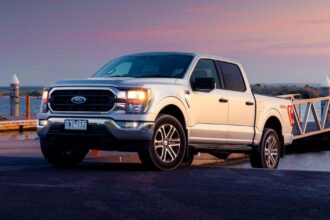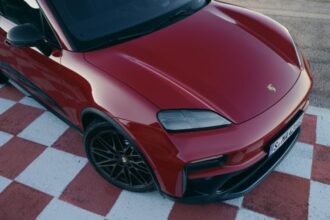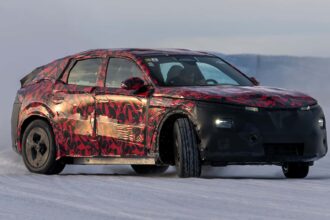
You can understand why European carmakers fear the march of their Chinese rivals. Yes, for their knack with mass production and battery innovation and software – and certainly for the less-than-completely-level fiscal playing field they operate on. But also for their tendency to keep banging away, with money and resources and unwavering focus, until a technical challenge is overcome. Getting an EV to crack 300mph is a perfect example. As is cracking the seven-minute mark at the Nürburgring Nordschleife.
That the same car has completed both clearly says something about Yangwang’s ambitions – it freely admits that its engineering team has been installed at the circuit for more than a year, likely with a singular focus – yet it is also about the other carmakers left in its wake: at 6:59.157, the U9 Xtreme is more than 25 seconds quicker than a Tesla Model S Plaid Track Pack over the same distance. It is more than 7 seconds quicker than the Weissach-equipped Taycan Turbo GT that Porsche specifically built to vanquish Tesla.
Even the Xiaomi SU7 Ultra Track Pack, itself a marvel of Chinese ingenuity and head of the EV leaderboard since April, must now be considered second to the all-conquering U9. Interestingly, Nurburgring’s official lap time page lists the Yangwang as a ‘Super sports car’ rather than an executive – but it hardly matters because it’s quickest there, too, outpacing even the time set by Martin Kodric in a Rimac Nevera back in 2023. That’s right: the Nevera, the quad-motor 1,914hp supercar built by Europe’s leading light in everything plug-in-able. The U9 Xtreme is the quickest production EV ever, no matter how it’s classified.
In point of fact, it’s the ‘production’ bit that you might choose to quibble with, on the basis that Yangwang’s insanely trick, 3,000hp model has not yet been greeted by a customer and will only ever reach 30 of them when it does. But on the basis that Porsche and Tesla’s efforts were also heavily modified with bragging rights (and not buyers) in mind, it would probably be unfair to hold its feet to the fire. The Xtreme is certainly based on a mass-produced 1,200-volt platform, and while much about it is bespoke (not least the cooling system and the semi-slick tyres), you would hardly bet against Yangwang turning out a few for showrooms.
“We are dedicated to pushing the limits of what can be achieved through technology, and the Nürburgring is such a legendary challenge for cars and drivers that it is only natural for our engineers to pursue their dreams there,” said BYD Executive Vice President Stella Li. “The limited-edition U9 Xtreme has proven that it is not only the world’s fastest car in a straight line, but also a vehicle with the performance and dynamic qualities necessary to break lap records on a circuit with a wide variety of corners.”
Indeed, nowhere offers a more formidable array of corners, and certainly we’ll take nothing away from German race veteran, Moritz Kranz, who (as the video shows) certainly earned his money over 7 minutes. He and the Yangwang team still have some way to go before they start upsetting combustion car royalty, of course (the current 911 GT3 is still inside the Xtreme’s time, let alone the RS), and the Mercedes-AMG One is hugely quicker and much more numerous in production volume. Appropriately, it will likely be Xiaomi that would like another say in the matter: let’s not forget it sent an SU7 Ultra prototype around the Nordschleife in 6:22.091 back in the spring – nor that it was 7 seconds quicker than the One. Shudder.








